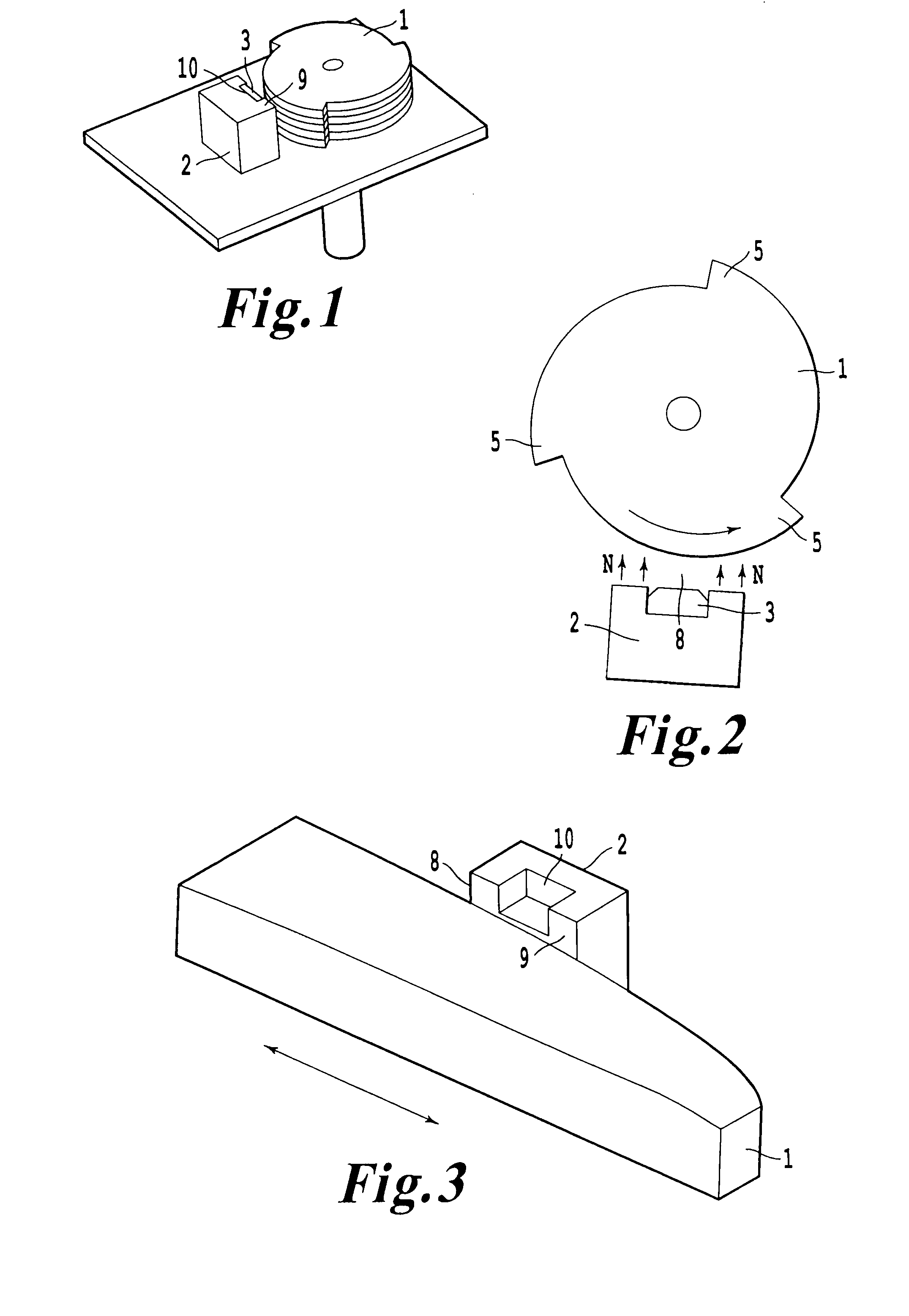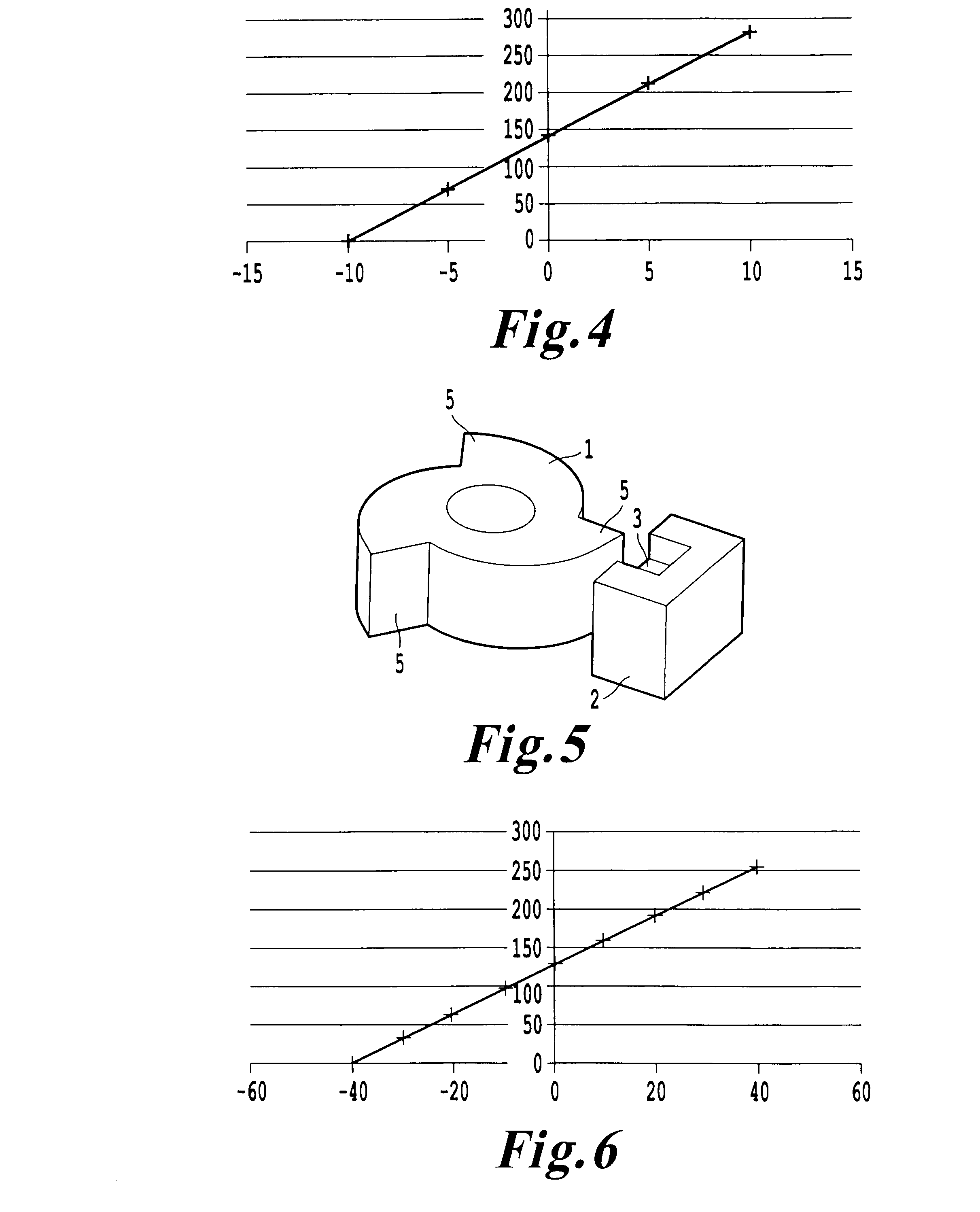Variable reluctance position sensor
a technology of position sensor and resistance, applied in the direction of measurement device, sensor output, instruments, etc., can solve the problems of inability to disclose characteristic, inability to perfect the compensation applied, and the influence of compensation error the smaller the measured inductance, so as to achieve excellent linearity and reduce manufacturing costs
- Summary
- Abstract
- Description
- Claims
- Application Information
AI Technical Summary
Benefits of technology
Problems solved by technology
Method used
Image
Examples
Embodiment Construction
[0060]One of the principles of the invention is to create an analog induction variation of low mean value, such as a few hundred gauss, which consists in a function of the linear or angular position of a ferromagnetic piece and which can be exploited by a magnetosensitive element.
[0061]As is evident in the different figures, the variable-reluctance analog position transducer intended to determine the position of a target 1 includes the said target 1 of ferromagnetic material, having a supposedly infinite permeability, a permanent magnet 2 and an element sensitive to the sense and intensity of a magnetic field, referred to hereinafter as “magnetosensitive element”3, such as a Halleffect sensor, disposed in the air gap formed between magnet 2 and target 1.
[0062]Magnet 2 is a magnet having two poles, one of the poles being directed from the edge of the air gap over the surface of the magnet forming the side of the air gap, the other pole being on the opposite side.
[0063]The magnetizati...
PUM
 Login to View More
Login to View More Abstract
Description
Claims
Application Information
 Login to View More
Login to View More - R&D
- Intellectual Property
- Life Sciences
- Materials
- Tech Scout
- Unparalleled Data Quality
- Higher Quality Content
- 60% Fewer Hallucinations
Browse by: Latest US Patents, China's latest patents, Technical Efficacy Thesaurus, Application Domain, Technology Topic, Popular Technical Reports.
© 2025 PatSnap. All rights reserved.Legal|Privacy policy|Modern Slavery Act Transparency Statement|Sitemap|About US| Contact US: help@patsnap.com



